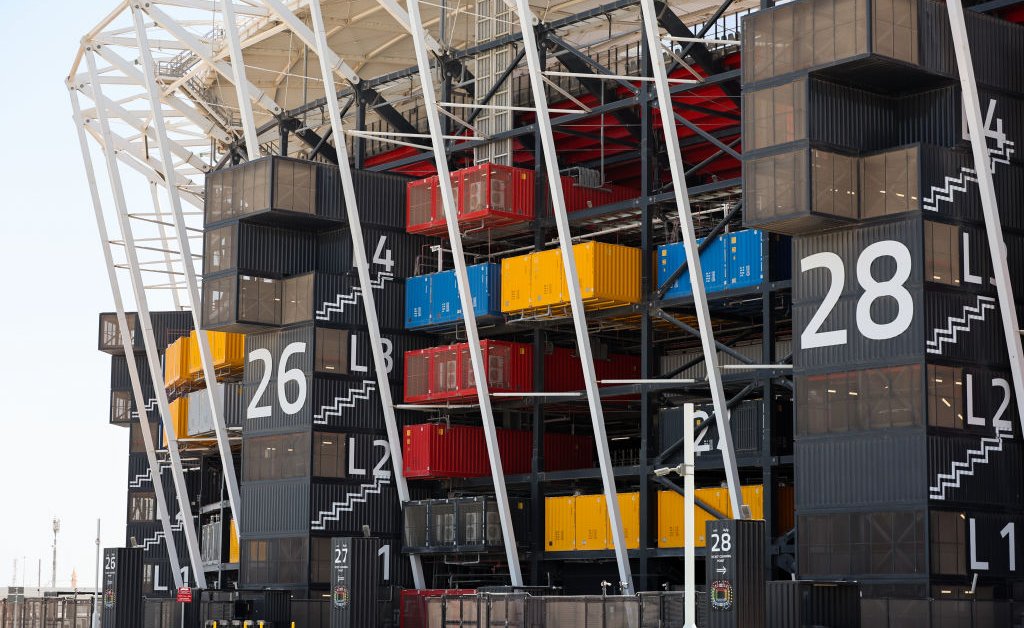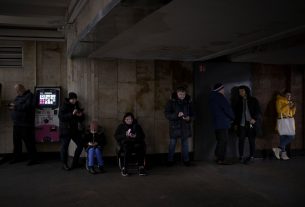The men’s soccer world championship ended in Qatar on Dec. 18 with one of the most thrilling finals in the league’s 92-year history. It was a night of heart-stopping drama that went into overtime, and then some, ultimately ending with the coronation of Argentina as world champions. For Qatar, a gas-rich gulf nation with big ambitions and little in the way of a soccer tradition, it was a star-studded coming out party, marking its entry on the world stage by showing off its political and sporting event prowess. Qatar spent some $220 billion over 12 years getting ready to host the championships, shelling out $6.5 billion to build seven of the most technologically advanced stadiums in the world, and to renovate another. An untold number of migrant laborers imported to do the work died in the process. But as the athletes pack up their trophies and the last of the fans trickle home, what happens to the stadiums now that the party is over?
Giant sporting events are often memorialized by the white elephants they leave behind, massive stadiums that cost hundreds of millions in construction, require millions more in annual maintenance, and are rarely—if ever—used again to their full capacity. Cape Town’s 2010 World Cup stadium has become a cherished local landmark, but the occasional concert and $4-a-person tours are not enough to fund its constant repairs. Eight of the 12 stadiums built for Russia’s 2018 World Cup, spread across a country with a population of 143 million spanning 11 time zones, are faring a bit better by hosting local soccer teams and sporting events, but none of them are likely to recoup the cost of investment.
The smallest country to host the World Cup since Switzerland in 1954, Qatar now has a surplus of very expensive stadiums on its hands. The country’s compact size—the farthest distance between two stadiums is 34 miles (55 km)—was a boon for super fans eager to pack more than one game in a day, but now that the fans have all gone, it seems like overkill. The total seating capacity comes to 426,031, nearly 100,000 seats more than the entire native population of Qatar. Even with the country’s 2-million migrant labor workforce factored in, there are enough seats for one out of every seven residents.
Read More: Thousands of Migrant Workers Died in Qatar’s Extreme Heat. The World Cup Forced a Reckoning
Nonetheless, Qatar’s Supreme Committee for Delivery and Legacy, the government body in charge of organizing the World Cup, has pledged that its stadiums will not meet the same fate as those of previous tournaments, promising to implement “innovative legacy plans to ensure our tournament doesn’t leave any ‘white elephants,’” according to a statement by the Supreme Committee’s Secretary General Hassan Al Thawadi. Some of the stadiums will be dismantled and recycled. Others will be downsized, and some transformed into residential and shopping destinations.
But before Qatar brings out the sledgehammers, it has another party coming up: the 2023 Asian Football Cup, which will likely be held in early 2024 to spare fans and players the scalding heat of a Qatari summer. China was to be the original host, but it relinquished the rights earlier this year in order to pursue its zero-Covid policy. Qatar will also host the 2030 Asian Games, and is bidding for the 2036 Olympic Games, which will be awarded in 2025. If successful, the Olympic bid could see some of the stadiums remodeled to suit different sports’ demands.
One stadium, at least, won’t make it that far. Ras Abu Aboud’s Stadium 974, which is made up of 974 recycled shipping containers (it’s not a random number—that’s Qatar’s international dialing code), will be completely dismantled and shipped to a still-yet-to-be-decided-upon country in need of a second-hand sports stadium. The world’s first fully demountable covered football stadium, 974 could provide a template for low-impact sports arenas, doing away with white-elephant syndrome entirely. The surrounding area will be converted into a waterfront business district.
The rest of the stadiums will have their capacities reduced by up to a half. Those excess seats, some 170,000 in total, will be donated to underdeveloped countries in need of sporting infrastructure, according to a statement by Ali Dosari, the Supreme Committee’s director of installations, “allow[ing] the culture of soccer to be promoted and to a greater extent the love of sport throughout the world.”
The organizers are also hoping that the World Cup will spark a bit more soccer culture in Qatar as well. Qatar owns the Paris Saint-Germain soccer club, where the final’s rivals, Lionel Messi and Kilian Mbappé, play when they aren’t on their national teams, but enthusiasm for the domestic Qatar Stars league is less pronounced, drawing crowds that rarely exceed 1,500. Nonetheless, local football clubs Al Rayyan and Al Wakrah will move into the Ahmad Bin Ali stadium, where the USA faced off against Wales on Nov. 21, and the Zaha Hadid-designed Al Janoub Stadium, respectively.
Not surprisingly, the Education City stadium, which is where most of Qatar’s universities and research facilities are located, will serve students and faculty from nine different universities and 11 schools.
The top tier of the tent-like Al Bayat stadium, which hosted the opening match on Nov. 20 as well as the U.S.-England game on Nov. 25, will be removed and converted into a five-star hotel and shopping center. A sports medicine hospital is planned for the pitch-side lower levels as well. Al Thumama stadium will get a similar treatment—refurbished with a sports clinic and hotel—while continuing to host as-of-yet-still-unspecified sporting events.
Lusail City’s Fabergé egg of a stadium will be completely transformed into a community hub and residential area, home to shops, schools, cafes, and medical clinics. The upper tier, with views over the spires and construction cranes of Qatar’s nascent architectural wonderland, will be turned into outdoor terraces for the venue’s new residents.
Khalifa International stadium, which was built by Qatar’s former Emir, Sheikh Khalifa ibn Hamad Al Thani in 1976 as an independence gift for his people, is the only stadium that will be left as is, ready to host matches and big tournaments as Qatar doubles down on its ambition to become an international sporting destination. If it does, that $6.5 billion stadium spending spree would have been well spent. If not, well, Qatar will join several other well-intentioned members of the International White Elephant Club.
More Must-Reads From TIME



